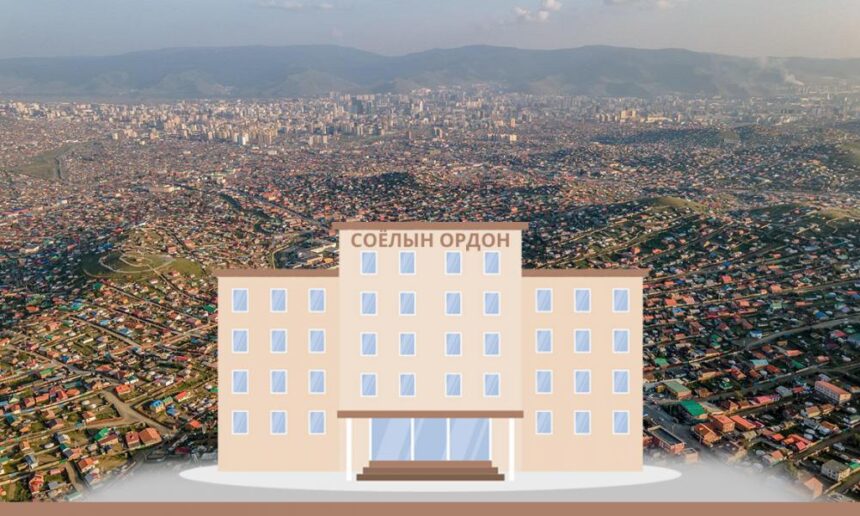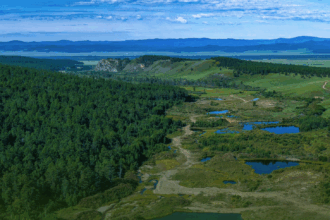Culture starts with hygiene, and not with palaces of culture. How can we make sense of the politicians who are building palaces and buildings with state budget funds when there are no sanitary facilities in the soum centers and people still use pit latrines? The quality of life begins with a home’s connection to the water and sewage system. It is possible to be hygienic only by the use of a modern toilet and by showering. People don’t fully grasp that it’s time to talk about it openly, and to at least replace the pit latrines with toilets and allowing for everyone the installation of showering facilities at home. When we were young, we were ordered to take hot showers in public bathrooms as a class.
Civilization begins with water supply. Even in the smallest settlements in developed countries, water for household use is treated in high-altitude containers and distributed to each household using its own pressure. It is absolutely possible to build water tanks and provide water supply to every household in our aimags, soums and districts. But whose interests are at stake when the water pressure tower is not built first, but the various cultural and sports palaces and museums are?
How many hours can a tourist endure travelling without a proper toilet? In 2021, preparations will take place to celebrate the 100th anniversary of the People’s Revolution and establishment of aimags, soums and official organizations. After a whole century, what if we set the goal to give everyone the chance to take a bath at home and celebrate the big anniversary with a holiday for hygiene?
Water Tank in Soum Center
Water tanks are used for many purposes, such as the storage of drinking water, watering livestock and crops, extinguishing fires, and preparing food. Throughout world history, people have built water tanks out of wood, clay, and stone and benefitting from making use of the water pressure.
Since the Mongols had a nomadic culture, there was no need to build a water tank. But why not build a water tank when settlements have already emerged and the demand is there? Although a centralized water supply system has been established in Ulaanbaatar in the 1950s under Russian guidance and is partially being expanded to this day, it still isn’t accessible for half of the population.
An elevated water tank produces a pressure of 1 kPa per every 10.2 cm. The 20-meter, 7 story tank pumps at a pressure of 200 kPa -by which most domestic and industrial water requirements are met. If located beside a mountain, it will even be cheap. The construction of water pressure tanks must be adjusted to local conditions and the tank needs to have a special shape, while also making sure the water isn’t polluted, the inside of the tank doesn’t corrode, and minerals aren’t accumulated. Water pipes as well must meet this requirement.
Khanbogd soum of Umnugovi Aimag is one of the soums in Mongolia that purifies its drinking water. The soum’s freshwater treatment plant purifies 2,600 cubic meters of water per day and has the capacity to meet the needs of 13,000 people, and can even be extended be expanded to the usage of 35,000 people. The fully automated facility, which meets international standards, was built in 2015 by the Mongolian Zag Company with an investment of $6.9 million from Oyu Tolgoi Company. Soum residents were previously using highly mineralized water from a depth of 10 meters. Currently, they are consuming drinking water pumped from a depth of 300 meters which is treated in accordance with sanitary requirements.
In Buren soum of Tuv aimag, an expandable fresh water pressure tower with a height of 15m and a capacity of 9 cubic meters was built.

Experts from Australia and Mongolia have estimated that a total of $20 million will be sufficient to build the engineering infrastructure that will connect all households in the center of Murun soum, Khuvsgul province, to the clean water and sewage system. The treatment plant is being built through a $10 million project from the Asian Development Bank. Furthermore, heating provided by liquefied gas can be cost efficient and Gazcom estimates that the system could be built for approximately $10 million. The water can also be heated with gas for taking a shower. When and how will the more than 300 soums be fully supplied with drinking water? When will everyone have the means to take a bath at home?
Civic Participation
State funding focuses on the construction of houses and buildings, such as cultural centers and sports gyms. In next year’s budget alone, 14 trillion tugriks were allocated to construction and urban development, of which only 76 billion tugriks – 0.5 percent is dedicated to building engineering infrastructure. According to the Sustainable Development Goals, civic participation, in addition to the local government, is essential to ensure that every household has access to clean water and sewage infrastructure. We urge all soum authorities to visit Gurvansaikhan soum of Dundgovi aimag to witness how all the necessary infrastructure met all the standards and was built through careful planning and participation of the citizens. There you can observe how the government and citizens can work together to change their community.
2020.11.11
Trans. by Riya.T and Munkh-Erdene.D












